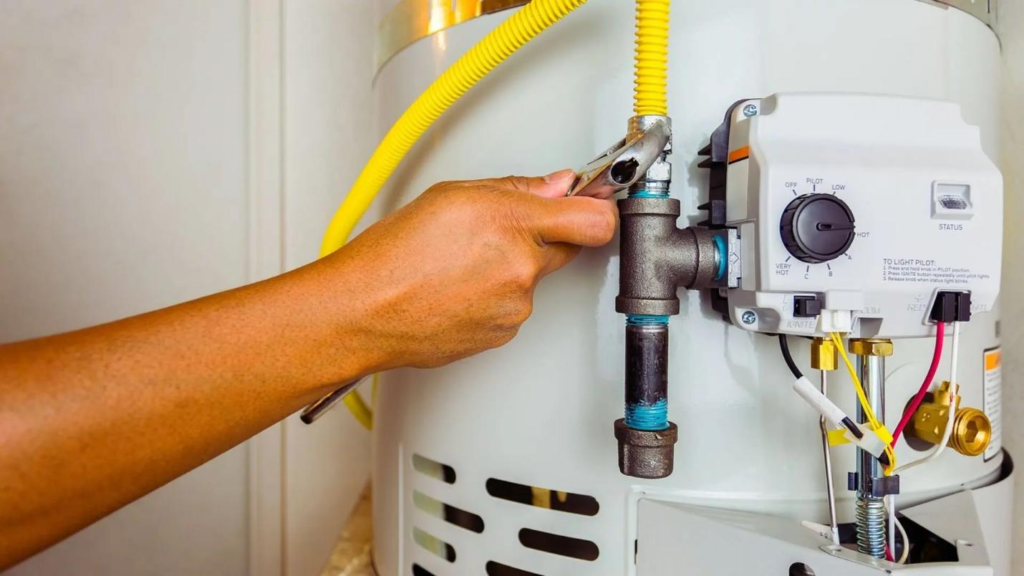Hot water is essential to modern Australian households, so when your hot water system fails or performs poorly, it creates significant disruption to daily life. Hot water system problems range from minor issues requiring simple repairs to complete system failures demanding replacement. Understanding how to assess problems, determine whether repair or replacement makes sense, navigate the selection of new systems, and manage the installation process empowers homeowners to make informed decisions during stressful situations when hot water suddenly becomes unavailable.
Australia’s hot water system market offers numerous technologies – electric storage, gas storage, continuous flow gas, heat pump, and solar systems – each with distinct advantages, costs, and suitability for different households. Additionally, evolving energy efficiency standards, changing energy costs, and growing environmental awareness influence optimal choices. Whether facing emergency repairs or planned upgrades, knowledge about hot water systems helps you balance immediate needs against long-term performance, efficiency, and value.
For homeowners in Melbourne’s northeastern suburbs experiencing hot water problems, consulting with an experienced plumber in Watsonia provides access to expertise on the full range of hot water technologies and ensures installations comply with Victorian regulations and safety standards. Professional guidance helps navigate the complex decisions involved in hot water system selection and installation.
Identifying Common Hot Water Problems
Understanding symptoms helps you communicate effectively with plumbers and assess problem severity:
- No hot water at all: Complete loss of hot water indicates serious problems requiring immediate attention. For electric systems, this often means a failed heating element or thermostat. Gas systems might have pilot light problems, gas supply issues, or failed igniters. Solar systems might experience collector damage or circulation pump failures.
- Insufficient hot water: If hot water runs out quicker than normal, you may have a failing heating element, a thermostat set too low, sediment buildup reducing tank capacity, or an undersized system for your household’s needs.
- Temperature fluctuations: Water that’s sometimes too hot or too cold suggests thermostat problems, mixing valve issues, or scale buildup affecting heat transfer.
- Discolored or foul-smelling water: Brown or rust-colored hot water indicates internal tank corrosion, while sulfur-like smells suggest bacterial growth. These problems often require system replacement as internal tank damage has occurred.
- Leaking: Water pooling around your hot water system indicates serious problems. Leaks from valve connections might be repairable, but tank leaks require immediate replacement, as tanks cannot be reliably repaired.
- Strange noises: Rumbling, popping, or hissing sounds often indicate sediment buildup, heating, and cracking on tank bottoms. While not immediately dangerous, this suggests approaching the end of system life.
Repair vs. Replacement Decision
When facing hot water system problems, determining whether to repair or replace involves several considerations:
- Age of system: Most hot water systems last 8-12 years. Systems approaching or exceeding this age typically warrant replacement rather than repair, as new problems will continue emerging. Repairing old systems often proves false economy, with additional failures following soon after.
- Repair costs: If repairs cost more than 40-50% of new system prices, replacement makes better financial sense. Additionally, new systems offer better efficiency, reducing ongoing operating costs.
- Energy efficiency: Older systems use significantly more energy than modern models. Even if repairs are feasible, replacement with efficient systems may pay for itself through reduced energy costs within a few years.
- Recurring problems: Systems requiring frequent repairs are telling you they’re failing. Multiple repair calls become more expensive than planned replacement, while leaving you vulnerable to sudden failures at inconvenient times.
- System type changes: If your current system type no longer suits your needs or if energy costs have shifted economic calculations, system problems provide opportunities to switch technologies. For example, rising electricity costs might favor replacing electric storage with gas continuous flow or heat pump systems.
Selecting Replacement Systems
When replacement is necessary, choosing the right system requires evaluating several factors:
- Household size and usage: Systems must match hot water demand. Small households (1-2 people) need smaller systems, while large families require substantial capacity. Consider peak usage patterns – multiple people showering in quick succession demands different solutions than staggered usage throughout the day.
- Energy sources: Evaluate energy costs in your area. In regions with expensive electricity but affordable gas, gas systems often prove economical. Areas with abundant sunshine favor solar. Properties without gas connections might prioritize heat pumps or solar with electric boosting over conventional electric storage.
- Available space: Different systems have varying space requirements. Continuous flow systems save space compared to storage tanks. Solar collectors require suitable roof space with appropriate orientation and no shading.
- Upfront vs. ongoing costs: Storage systems generally cost less initially but more to operate. Heat pumps and solar systems cost more upfront but deliver lower operating costs. Calculate payback periods to evaluate long-term value.
- Environmental considerations: If reducing environmental impact matters to you, prioritize high-efficiency options like heat pumps or solar systems that minimize energy consumption and greenhouse gas emissions.
- Climate suitability: Heat pumps perform best in warm climates and lose efficiency in very cold conditions. Solar systems obviously depend on sunshine availability. Consider your local climate when evaluating options.
System Types Explained
- Electric storage: Traditional electric storage tanks heat and maintain water temperature continuously. They’re inexpensive to purchase and install but expensive to operate, particularly with current electricity prices. New models offer better insulation than older units, improving efficiency somewhat.
- Gas storage: Gas storage systems heat water faster than electric models and cost less to operate in areas with affordable gas. They require flues for exhaust gases and appropriate ventilation.
- Continuous flow gas: These systems heat water instantly as it flows through, eliminating storage tank heat losses. They provide endless hot water and save space. They require adequate gas supply and proper venting but offer excellent efficiency and performance.
- Heat pump: Heat pumps extract warmth from surrounding air to heat water, using 60-70% less energy than conventional electric systems. They cost more initially but save substantially on operating costs. They work best in warm climates and require outdoor installation space. Some models generate noise that might concern nearby neighbors.
- Solar: Solar systems use roof-mounted collectors to harness free solar energy. They typically include gas or electric boosters, ensuring hot water during cloudy periods. While expensive initially, solar systems offer the lowest operating costs and qualify for government incentives. They require suitable roof space and orientation for optimal performance.
Regulatory Requirements and Rebates
Hot water system installations must comply with building codes, plumbing regulations, and energy efficiency standards. Licensed plumbers ensure installations meet these requirements, which vary by state. Incorrect installations void warranties, create safety hazards, and cause problems with insurance and property sales.
Many energy-efficient systems qualify for government incentives:
- Small-scale Technology Certificates (STCs): Solar and heat pump systems generate STCs based on displaced energy, effectively discounting purchase prices by $500-1,500, depending on system size and location.
- State and territory rebates: Various programs offer additional rebates for efficient systems. Victorian, New South Wales, and Queensland residents may access substantial rebates reducing net costs. Check with your energy retailer and state environment department for current programs.
- Interest-free financing: Some states offer interest-free loans for efficient appliance purchases, making upfront costs more manageable.
Installation Process
Professional installations typically take 3-6 hours, depending on system complexity:
- System removal: Plumbers safely disconnect and remove old systems, disposing of them according to environmental regulations.
- Preparation: They prepare installation locations, potentially installing new mounting brackets, extending gas lines, upgrading electrical circuits, or making other necessary modifications.
- Installation: New systems are positioned, connected to water supplies, connected to energy sources (electrical, gas, or solar), and fitted with legally required safety devices, including temperature/pressure relief valves and tempering valves preventing scalding.
- Testing: After installation, plumbers test all functions, check for leaks, verify proper temperature control, and ensure safety devices function correctly.
- Demonstration: Quality installers demonstrate system operation, explain maintenance requirements, and provide documentation, including operating instructions, warranty information, and maintenance schedules.
Maintenance Requirements
Different systems need varying maintenance:
- All systems: Annual professional inspections, checking safety valves, anode rods (for storage tanks), and connections help identify problems early.
- Storage systems: Benefit from periodic flushing, removing sediment buildup that reduces efficiency and damages tanks. This should be done annually in hard water areas.
- Solar systems: Require checking collectors for damage, verifying circulation systems function properly, and monitoring collector fluid levels (for closed-loop systems).
- Heat pumps: Need air filter cleaning and professional servicing of refrigeration components every 2-3 years.
Manufacturers’ warranties often require proof of regular servicing, so maintain records of all maintenance work.
Emergency Situations
Hot water system failures occasionally create emergencies requiring immediate attention:
- Gas leaks: If you smell gas around your hot water system, turn off the gas supply at the meter immediately, evacuate the building, and call emergency services, followed by a licensed plumber. Never use electrical switches or create sparks near gas leaks.
- Major leaks: Turn off the water supply to the system using the isolation valve, then call an emergency plumber. Contain leaking water with towels to minimize damage.
- Electrical issues: If your electric hot water system trips circuit breakers repeatedly or shows electrical arcing, turn off power at the switchboard and call an emergency plumber or electrician.
While awaiting repairs, you can heat water on your stove for essential needs, though this provides only minimal hot water.
Conclusion
Hot water system problems require prompt, informed responses. Assess whether repairs or replacement make sense based on system age, repair costs, and efficiency considerations. When replacing systems, evaluate options based on household needs, energy costs, available incentives, and long-term operating expenses. Always engage licensed plumbers for installation, ensuring compliance with regulations, proper safety, and warranty validity. With appropriate selection, professional installation, and regular maintenance, modern hot water systems provide reliable, efficient service for a decade or more.








Leave a Reply